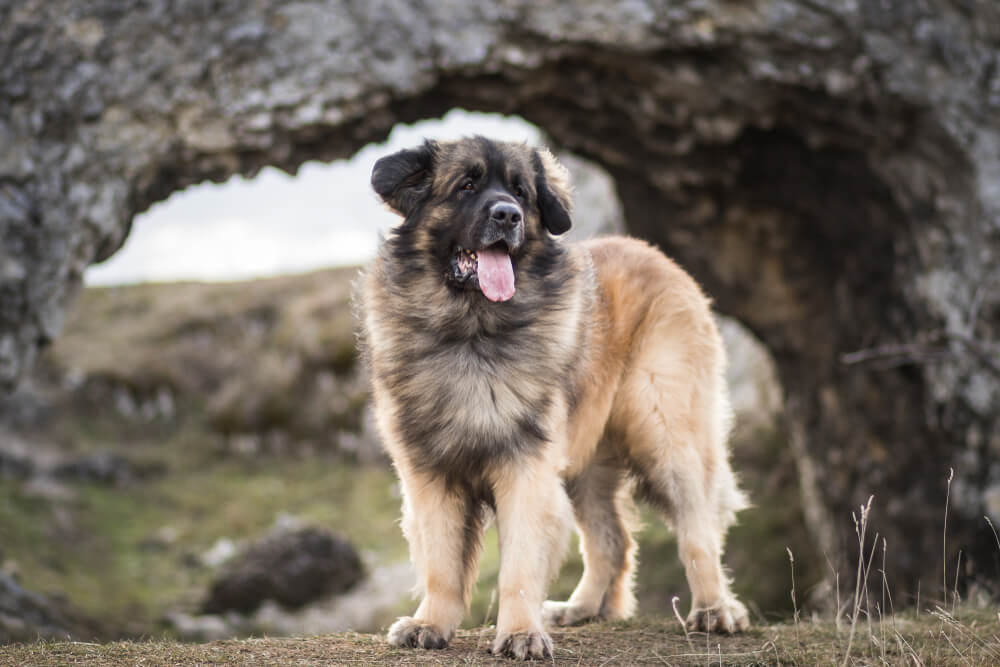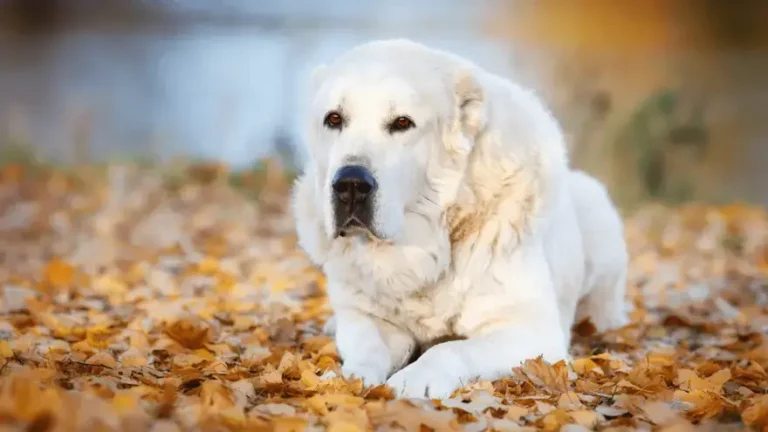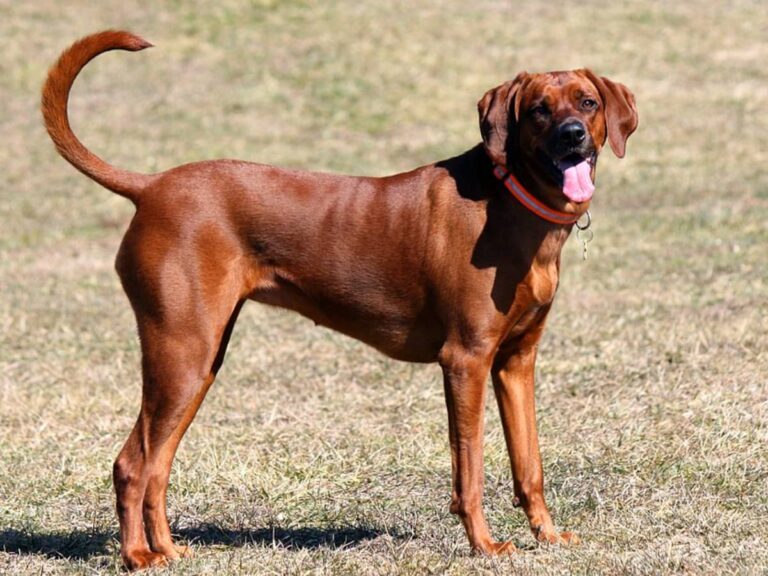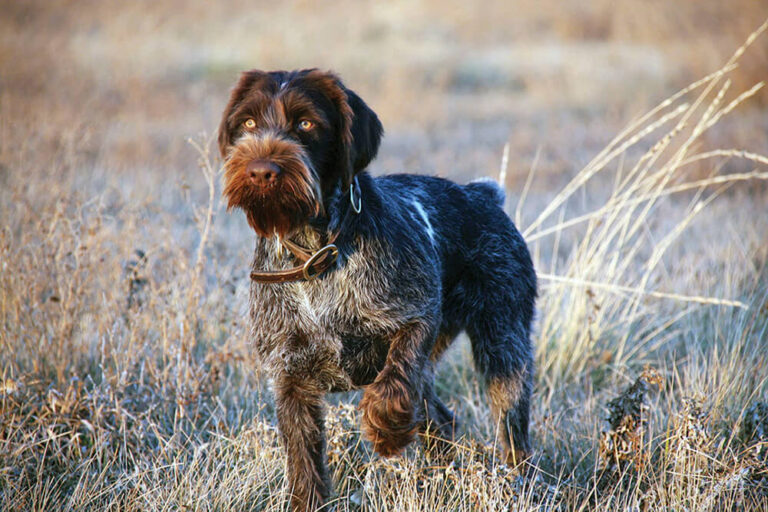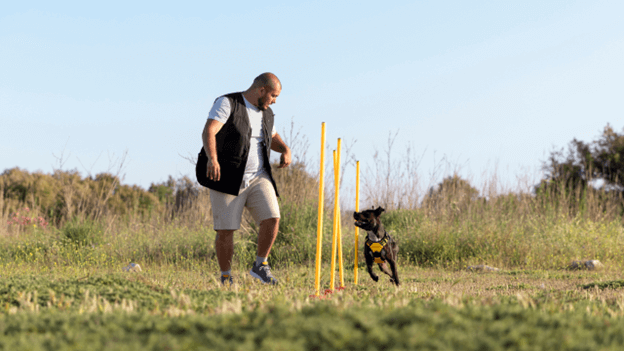Leonberger Dog Breed: The Gentle Giant of Germany
The Leonberger, affectionately known as the “Leo,” is a majestic and imposing breed that captures hearts with its gentle nature and striking appearance. Originating from Leonberg, Germany, these dogs are a testament to the vision of Heinrich Essig, who aimed to create a breed that embodied the strength of a lion and the loyalty of a dog. With their impressive size, luxurious coat, and warm temperament, Leonbergers have become beloved companions for those seeking a gentle giant.
Contents
Physical Characteristics

Leonbergers are truly a sight to behold. Males stand 28-31 inches tall at the shoulder and can weigh up to 170 pounds, while females are slightly smaller, ranging from 25-29 inches and weighing up to 150 pounds. Their most striking feature is their dense, water-resistant double coat, which comes in various shades of lion-yellow, red, reddish-brown, and sand, often with a black mask that accentuates their expressive eyes.
The breed’s powerful build is balanced by a graceful gait, giving them an air of nobility. Their broad chest, muscular shoulders, and strong legs speak to their working dog heritage. A distinctive feature is their bushy tail, which curves slightly and is carried low when relaxed, adding to their leonine appearance.
Temperament and Personality
At the heart of the Leonberger’s charm is their exceptional temperament. These dogs are renowned for their gentle, patient, and loving nature. They possess a calm confidence that makes them excellent family companions. Leos are particularly good with children, often forming strong protective bonds while remaining incredibly gentle in their interactions.
Despite their size, Leonbergers are not typically aggressive. They’re social creatures who enjoy being part of family activities and are known for their desire to please their owners. This breed is often described as having a keen sense of humour with a playful side that can surprise those unfamiliar with the breed.
Their intelligence and sensitivity make them excellent therapy dogs, and they often excel in roles that require a calm and steady presence. However, potential owners should be aware that Leonbergers can be sensitive to harsh corrections and respond best to positive reinforcement training methods.
Training and Exercise Needs

Leonbergers are intelligent and eager to please, which generally makes them highly trainable. However, their size and strength necessitate early socialization and consistent training from puppyhood. Positive reinforcement techniques work best with this sensitive breed, as they respond well to praise and rewards.
Despite their large size, Leos don’t require excessive exercise. Daily walks, playtime in a securely fenced yard, and occasional swimming (which they often love due to their waterproof coat) are usually sufficient to keep them happy and healthy. Mental stimulation is equally important for this bright breed. Puzzle toys, training sessions, and interactive games can help keep their minds engaged.
It’s crucial to note that while Leonbergers enjoy activity, they shouldn’t be over-exercised during their growth phase (up to about 18 months) to protect their developing joints.
Grooming and Care
The Leonberger’s luxurious double coat requires regular maintenance to keep it in top condition. Owners should be prepared for daily brushing, especially during shedding seasons in spring and fall. This not only helps manage shedding but also prevents matting and allows for bonding time between dog and owner.
Bathing should be done as needed, typically every 6-8 weeks, using dog-specific shampoos to maintain the coat’s natural oils. Regular ear cleaning, nail trimming, and teeth brushing should also be part of their grooming routine.
One aspect potential owners should be prepared for is drooling. While not excessive droolers, Leos do tend to drool, especially after drinking or when anticipating food. Keeping a cloth handy for quick clean-ups is often part of life with a Leonberger.
Health Concerns
Like many large breeds, Leonbergers are prone to certain health issues. Hip and elbow dysplasia, bloat (gastric dilatation-volvulus), and certain eye problems are concerns within the breed. They may also be susceptible to certain cancers.
The average lifespan of a Leonberger is 7-9 years, which is relatively short for a dog but not uncommon for giant breeds. However, with proper care, nutrition, and regular veterinary check-ups, many Leos live happy, healthy lives well into their teens.
Responsible breeders conduct health screenings on their breeding stock to minimize the risk of genetic health issues. Prospective owners should always request health clearances for both parent dogs.
Nutritional Requirements
Feeding a Leonberger requires careful consideration due to their size and potential for rapid growth in puppyhood. A high-quality, balanced diet appropriate for large breeds is essential. Puppy food designed for large breeds can help control growth rates, which is crucial for proper joint development.
Adult Leonbergers typically do well on two meals a day. The amount should be adjusted based on the dog’s age, activity level, and overall health. It’s important to monitor their weight closely, as obesity can exacerbate joint problems in large breeds.
Many Leo owners opt for a combination of dry kibble and fresh foods, always ensuring that any diet changes are made gradually to avoid digestive upset. As with any large, deep-chested breed, it’s advisable to avoid feeding immediately before or after exercise to reduce the risk of bloat.
History and Origin
The Leonberger’s story begins in the 1830s in Leonberg, Germany. Heinrich Essig, a politician and entrepreneur, set out to create a breed that would embody the lion in the town’s crest. He crossed a Newfoundland with a long-haired Saint Bernard, later introducing Pyrenean Mountain Dogs into the mix.
Initially bred as a companion and status symbol for European royalty, Leonbergers soon proved their worth as versatile working dogs. They excelled in water rescue, draft work, and as loyal guardians of farms and estates.
The breed faced near extinction during World Wars I and II, but dedicated breeders managed to revive the Leonberger population. Today, while still relatively rare, they are cherished as both working dogs and family companions around the world.
Leonbergers as Family Pets
Leonbergers make wonderful family pets for those prepared for their size and grooming needs. They adapt well to various living situations, from farms to apartments, provided they receive adequate exercise and companionship. Their calm nature makes them suitable for homes with children, though supervision is always recommended due to their size.
These dogs thrive on human interaction and are not suited to being left alone for long periods. They do best in homes where someone is present most of the time. While they can adapt to different climates, their thick coat makes them more comfortable in cooler weather.
Potential owners should consider the financial aspect of owning a Leonberger, including food costs, potential medical expenses, and the space required to accommodate such a large dog comfortably.
Breed Standards and Recognition
The Leonberger was recognized by the American Kennel Club (AKC) in 2010, although the breed had been well-established in Europe for much longer. The AKC breed standard emphasizes Leo’s balanced proportion, strength without heaviness, and elegant movement.
Key points in the breed standard include:
- A black mask that extends above the eyes
- Ears that are fleshy, moderately sized, and hanging close to the head
- A scissor bite with complete dentition
- A straight topline that remains level in motion
- A tail that reaches at least to the hock when relaxed
In the show ring, Leonbergers are judged on their ability to move with power and grace, showcasing their working dog heritage.
Famous Leonbergers
While not as widely known as some breeds, Leonbergers have had their share of fame. One notable Leo was Nanook, who starred in the 1990s film “Iron Will.” In real life, Leonbergers have gained recognition for their work in therapy and as assistance dogs.
In their native Germany, Leonbergers are often seen in parades and festivals, representing their hometown of Leonberg with pride. Their gentle nature and impressive appearance make them natural ambassadors for the breed.
Rescue and Adoption
For those interested in bringing a Leonberger into their lives, adoption is a wonderful option. The Leonberger Club of America maintains a rescue program that places Leos in need of new homes. These dogs may come with a history, but they often make loyal and loving companions.
When considering adoption, potential owners should be prepared for the possibility of health issues or behavioral quirks that may require patience and understanding. However, the reward of providing a loving home to a gentle giant in need is immeasurable.
Support for Leonberger owners is available through breed clubs, online communities, and local meetups. These resources can be invaluable for advice on care, training, and enjoying life with a Leo.
Frequently Asked Questions
Are Leonberger dogs good pets?
Yes, Leonbergers can make excellent pets for the right families. They are known for their gentle, patient nature and their affection towards children. However, their large size and grooming needs mean they’re best suited to homes that can accommodate these requirements and provide ample time for companionship and exercise.
What two breeds make a Leonberger?
The Leonberger was created by crossing Newfoundland with a long-haired Saint Bernard. Later, the Pyrenean Mountain Dog was introduced to refine the breed. This combination resulted in the large, lion-like appearance and gentle temperament that Leonbergers are known for today.
Is a Leonberger a rare dog?
While not as rare as some breeds, Leonbergers are less common than many popular dog breeds. Their size and specific care requirements mean they’re not suitable for every home, which contributes to their relative rarity. However, their popularity has been growing, especially among those looking for a gentle giant companion.
What was the original purpose of the Leonberger dog?
Leonbergers were originally bred in the 1830s by Heinrich Essig in Leonberg, Germany, as a symbolic dog that would resemble the lion on the town’s crest. They were initially intended to be companion dogs for European royalty. However, their versatility soon led to them being used as working dogs, excelling in tasks such as water rescue, draft work, and guarding properties.
Conclusion
The Leonberger is a breed that truly embodies the phrase “gentle giant.” With their impressive size, striking appearance, and heartwarming temperament, they capture the imagination and the hearts of dog lovers worldwide. While they require dedication in terms of space, grooming, and companionship, the love and loyalty a Leo brings to a family is unparalleled.
For those prepared to meet their needs, a Leonberger can be an extraordinarily rewarding companion. They offer a unique blend of strength and gentleness, playfulness and calm, making them adaptable to various lifestyles and family situations. Whether as a family pet, a therapy dog, or a working companion, the Leonberger continues to prove why it has been cherished for nearly two centuries.
As with any breed, potential owners should do thorough research and meet several Leonbergers before committing. Those who welcome a Leo into their homes will find a devoted friend who brings joy, laughter, and a touch of lion-like majesty to everyday life.
- Golden Retriever Pros and Cons: What Every Pet Parent Should Know - 15 September 2025
- Cane Corso Dog Breed: Health, Care, and Lifespan - 14 September 2025
- Catahoula Leopard Dogs: Description, Temperament, Lifespan, & Facts - 21 July 2025

